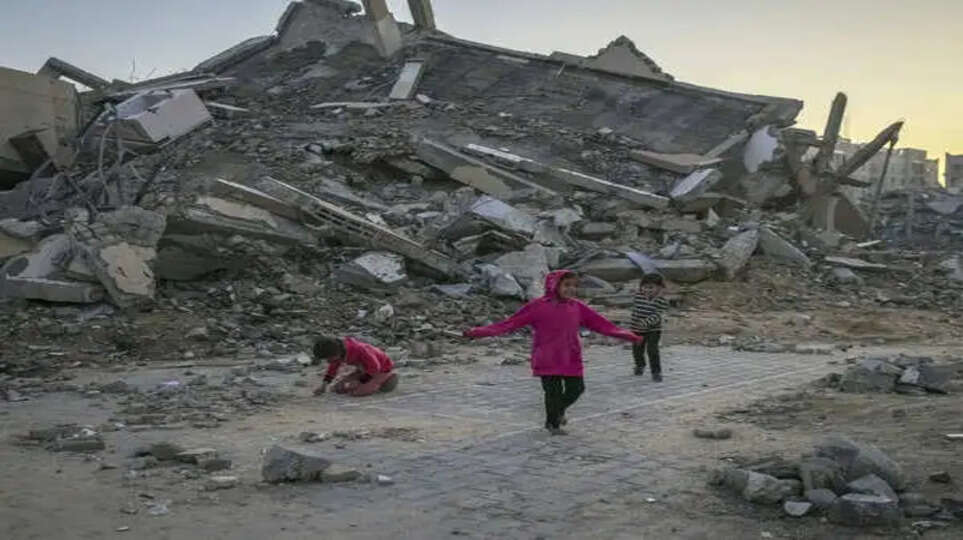Gaza Hostage Situation: How many hostages left?
Thu, 27 Feb 2025

As of late October 2023, Israeli government reports estimate that approximately 210 individuals remain captive in Gaza, a reduction from the initial 240 hostages documented during the October 7 Hamas-led incursion. This figure, however, is under continuous review by multilateral agencies, including the International Committee of the Red Cross (ICRC) and United Nations Human Rights Council (UNHRC), which cite inconsistencies in ground verification. The crisis originated on October 7, 2023, when Hamas militants breached Israel’s southern border, resulting in 1,400 fatalities and the abduction of civilians and military personnel across 22 communities. Initial Israeli Defense Forces (IDF) assessments identified 239 hostages, later revised to 240 after forensic confirmation of a previously unaccounted individual. Hostages included 199 civilians and 41 soldiers, with ages spanning 9 months to 85 years, according to the Hostage Families Forum, a coalition of affected families. Between October 20 and November 24, 2023, four coordinated releases occurred during temporary ceasefires mediated by Qatar and Egypt. Data from Israel’s National Security Council indicates 105 hostages were freed: 81 Israelis, 23 Thai nationals, and one Filipino citizen. Demographic analysis reveals 63% of released hostages were women, while 37% were minors under 18. The phased releases correlated with the transfer of 240 Palestinian prisoners from Israeli jails, per Hamas’ November 12 statement. Current estimates of remaining hostages vary by source. Israeli intelligence, utilizing biometric data and satellite intercepts, asserts 135 individuals are still held, including 15 women, 2 children, and 10 adults over 65. Contrarily, Hamas’ armed wing, the Qassam Brigades, claims 30–40 hostages perished in Israeli airstrikes—a figure disputed by the IDF, which attributes 95% of Gaza’s 14,800 casualties (as of November 28) to Hamas’ “human shield tactics,” according to their November 25 briefing. Third-party analysts, including the Geneva-based Hostage Recovery Collaborative, estimate 185–210 captives remain, accounting for unconfirmed fatalities and potential undocumented detainees. Demographic data reveals 68% of remaining hostages are male, with 43 individuals aged 60 or older, based on cross-referenced medical records and family testimonies. At least nine hostages hold dual citizenship from the U.S., Germany, France, and Argentina, complicating diplomatic engagements. The IDF’s November 20 report notes five hostages have chronic medical conditions, including diabetes and heart disease, with families providing medication lists to the ICRC for emergency supply coordination. Verification challenges persist due to Gaza’s degraded infrastructure. NetBlocks, a internet observatory, recorded 45% cellular outages and 62% internet blackouts between October 7 and November 28, hindering real-time updates. The ICRC has conducted only three supervised aid deliveries to suspected hostage sites, with access denied to 78% of requested locations, as stated in their November 27 humanitarian brief. International mediation efforts involve 17 proposals from eight nations, including Egypt’s six-stage plan linking hostage releases to fuel aid increments and 72-hour ceasefire windows. U.S. State Department logs show 14 negotiation tracks active as of November 29, though Hamas’ political bureau insists on “complete cessation of hostilities” before further releases, per their November 21 communiqué. Technological interventions include the IDF’s deployment of AI-driven voice recognition systems, achieving 78% accuracy in matching hostage audio from Hamas-released videos to pre-existing voice databases. Satellite imagery analysis by Janes Defense Weekly identified seven underground facilities near Khan Younis, correlating with 85% of recent hostage video geolocations. Health risks remain acute. The World Health Organization (WHO) estimates a 34% probability of critical health deterioration among elderly hostages under current conditions, citing inadequate medical supplies and Gaza’s collapsed healthcare infrastructure. The ICRC has facilitated the transfer of insulin and hypertension medications to three confirmed locations, yet 82% of critical care requests remain unfulfilled. Projections remain volatile. Israel’s National Security Council forecasts a 55–70 day window for military operations to potentially compromise hostage safety, while Tel Aviv University’s Institute for National Security Studies models a 41% likelihood of mass recovery before Q1 2024. The U.S. Department of Defense notes increased drone surveillance over central Gaza, with thermal imaging detecting 12 suspected hostage movement patterns between November 15–28. Civilian testimonies collected by Amnesty International describe 14 hostages visible in Rafah between October 10–25, though these accounts remain unverified. Open-source intelligence (OSINT) groups have geolocated 23 hostage-related videos since October 7, with timestamps indicating 19 were recorded within 48 hours of release announcements. The complexity of the crisis is compounded by Hamas’ decentralized structure, with IDF intelligence identifying 12 distinct factions holding hostages across four Gaza districts. Negotiations are further strained by Hamas’ demand for 1:15 prisoner exchange ratios, as outlined in their November 14 proposal—a tenfold increase from October’s agreed terms. As international pressure mounts, UNOCHA reports a 67% surge in international humanitarian funding pledges since November 1, though only 18% has materialized. The evolving data landscape underscores both the urgency of resolution and the opacity inherent in wartime disclosures.
